The Greenland Telescope (GLT) Project*
"Direct Confirmation of Black Holes with Submillimeter VLBI"
Bringing Black Holes into Reality
A direct confirmation of black holes (BH) in the Universe is one of the ultimate goals in modern physics and astronomy. With such an observation we can access matter and electromagnetic fields under extremely strong gravity for the first time. A BH shadow is expected against the bright enhanced annulus of emission around a BH. The size of this annulus, “Event Horizon” as defined by the Schwarzschild radius (rs), is lensed and self-magnified by its strong gravity. Therefore, a detection of a BH shadow is a direct confirmation of the existence of a BH, and provides a test for general relativity in the strong gravity regime. In addition to the detection of strong lensing, a BH spin can also be probed by a precise image of the shape and the axis of the shadow as it is expected that the BH shadow would be compressed perpendicularly to the spin axis of the BH. Furthermore, since we observe BHs as the silhouette against accretion disks and/or relativistic jets, BH shadow imaging will simultaneously provide images of the innermost regions of accretion disks and the formation regions of relativistic jets. However, the apparent size (depending on the distance to the source and the intrinsic size of the BH) of the shadow is very tiny. Thus, a special telescope system is required for such observations: that is the Very Long Baseline Interferometry (VLBI) at submillimeter (submm) wavelengths.

How to Observe Black Holes?
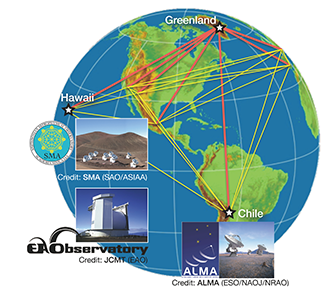
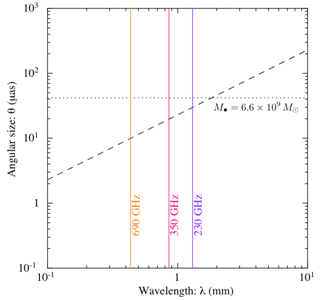
Image credit: M Nakamura (ASIAA)
Submm VLBI Operation with New Antenna
Submm VLBI observations are conducted under international collaborations. We are attempting to play a leading role in these observations by proposing a new submm VLBI array consisting of the JCMT/SMA in Hawaii, the ALMA in Chile and a new single-dish telescope at an excellent site. ASIAA is actively involved in all these telescope projects. Our new telescope is the North-American (NA) ALMA prototype antenna, a 12-meter diameter antenna designed for mm and submm wavelengths (0.3 to 10 mm, or 30 to 950 GHz). In July 2010, the US National Science Foundation (NSF) announced a call for expression of interests for this telescope. The Smithsonian Astrophysical Observatory (SAO) was awarded the telescope in April 2011, under close collaboration with ASIAA.
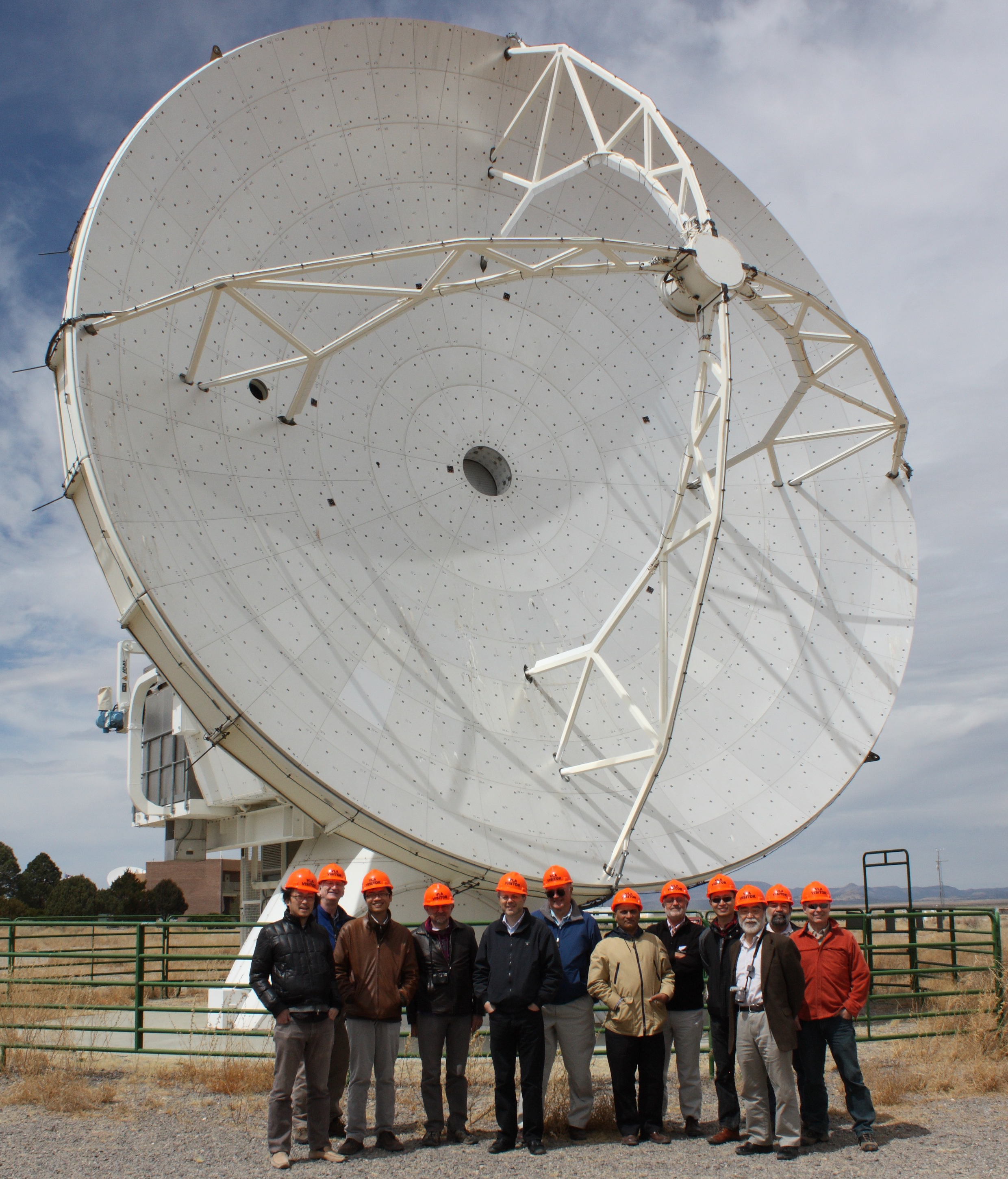
Image credit: ASIAA.
Site Selection of New Submm VLBI Station in Greenland
We examined possible sites for a new submm telescope location. Our main requirements are: (1) excellent observing conditions to perform high-quality observations at submm and even shorter wavelengths; (2) location providing long baselines with other key stations (e.g., JCMT, SMA, andALMA). Based upon the precipitable water vapor (PWV) data measured by the NASA satellites Aqua and Terra/MODIS, we selected the Summit Station in Greenland as the best candidate site. For further evaluation, we performed a site-testing campaign at the Summit Station from 2011 for 3.5 years with a radiometer to measure the atmospheric transparency at 225 GHz. This campaign showed that the Summit Station in Greenland is a very good submm site, comparable to the ALMA or the SPT site. These excellent weather conditions will also enable us to do single-dish THz work.
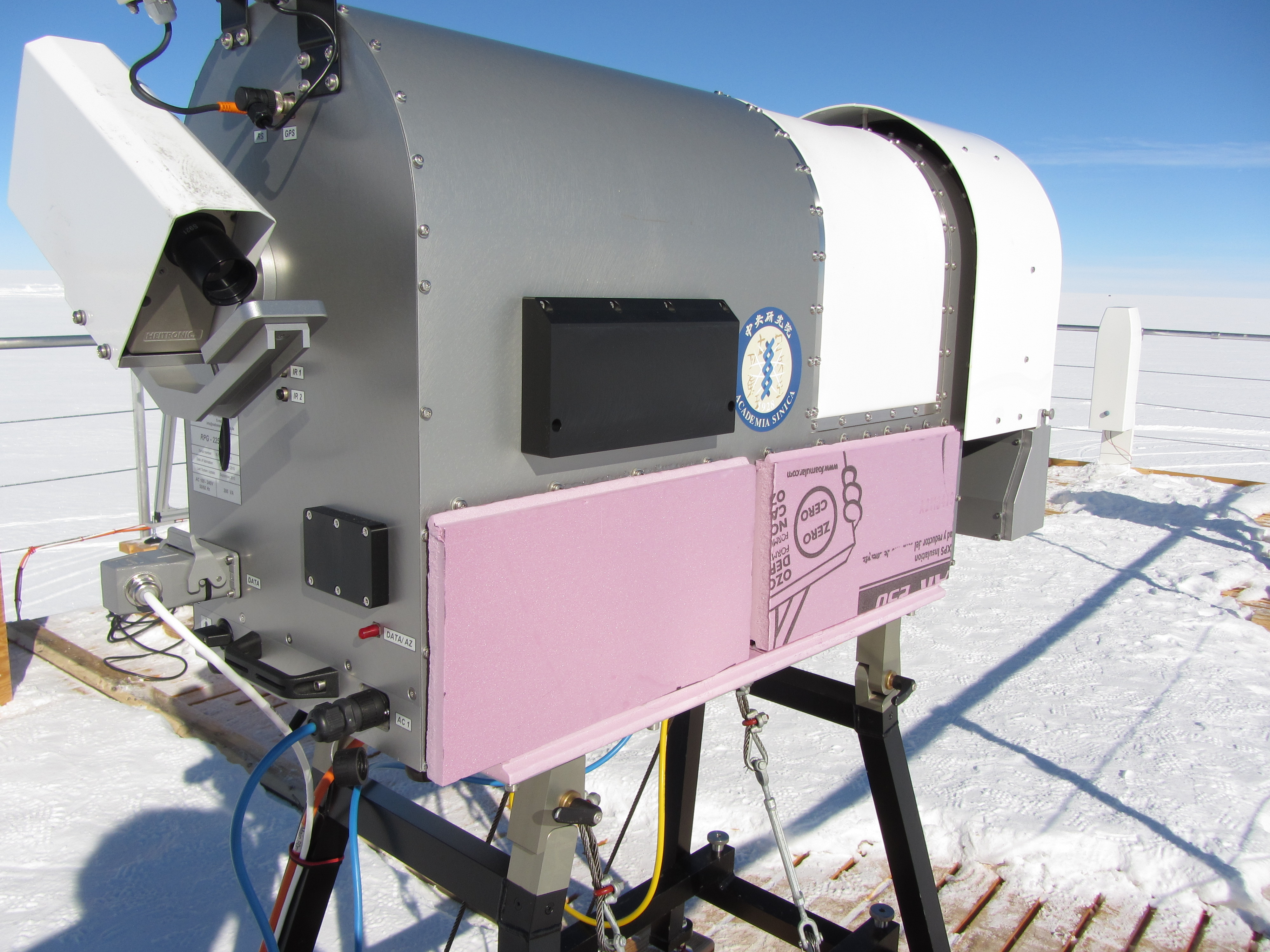
Image credit: ASIAA.
Anteanna Retrofitting and Thule Reassembly
The newly obtained telescope was tested for functionality at the VLA site in Socorro, NM, in 2011/2012: we conducted photogrammetry surface measurements and examined the pointing accuracy. In November 2012, the antenna was disassembled and parts were shipped to various places for retrofitting for low-temperature operation down to -55°C. After the retrofitting was finished, the antenna was then transported to the Thule Air Base, Greenland, where we would perform the telescope commissioning and initial science observation before moving forward to the Summit Station. The first shipment arrived in the summer 2016, started the construction immediately after the first shipment, and the reassembly completed when the primary dish was mounted in the next summer in 2017. Immediately following, the servo system passed the site acceptance test (SAT) in early November 2017, and the antenna was officially delivered by the manufacturer.
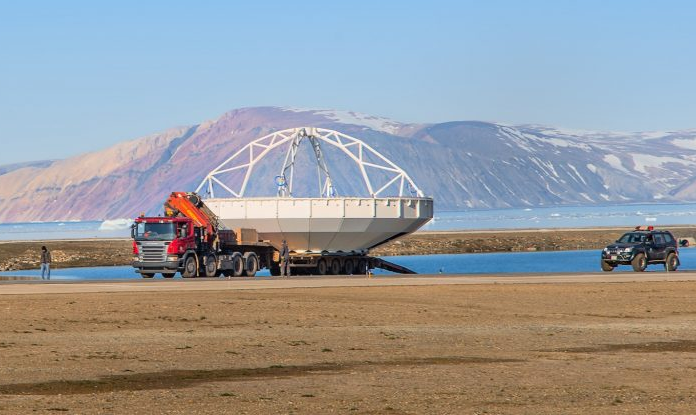

Instrumentation Development and Integration Tests at JCMT
In parallel to the antenna construction activities, the receiver systems and associated electronics were designed and fabricated by our engineers in Taiwan and Hawaii. Also two sets of VLBI MARK6 recorders were acquired, and the relevant VLBI backend components were built. All these instruments were brought to Hawaii and installed onto the JCMT in July 2017. We checked the frequency accuracy and phase stability of each component and confirmed they were working as expected. In September 2017, we got the first light with GLT receiver through JCMT optics, and then performed the VLBI test observation with the SMA and successfully detected the first fringe. With this, we are confident that the GLT frontend and the VLBI backend were ready for installation at Thule, which took place right after the antenna servo SAT in November 2017.
First Lights and VLBI Observations during Commissioning
The commissioning is to fine-tune the antenna for the best performance. The first steps includes building the pointing model based on the optical, radio and spectral line measurements, and finding the optimal focus position of the sub-reflector. With the preliminary results, we were able to detect the first astronomical lights of the Moon using the 86 GHz receivers at the end of year 2017. We then observed the first astronomical spectrum of Orion-KL using the VLBI backend and successfully detected the CO(2-1) line in January 2018. The pointing model was further improved by measuring the line sources, and afterward at the end of January we joined the dress rehearsal for the coming Event Horizon Telescope (EHT) observations, together with ALMA. The joint data was quickly correlated and showed our first astronomical fringe detection, a huge one among other milestones of the GLT project.
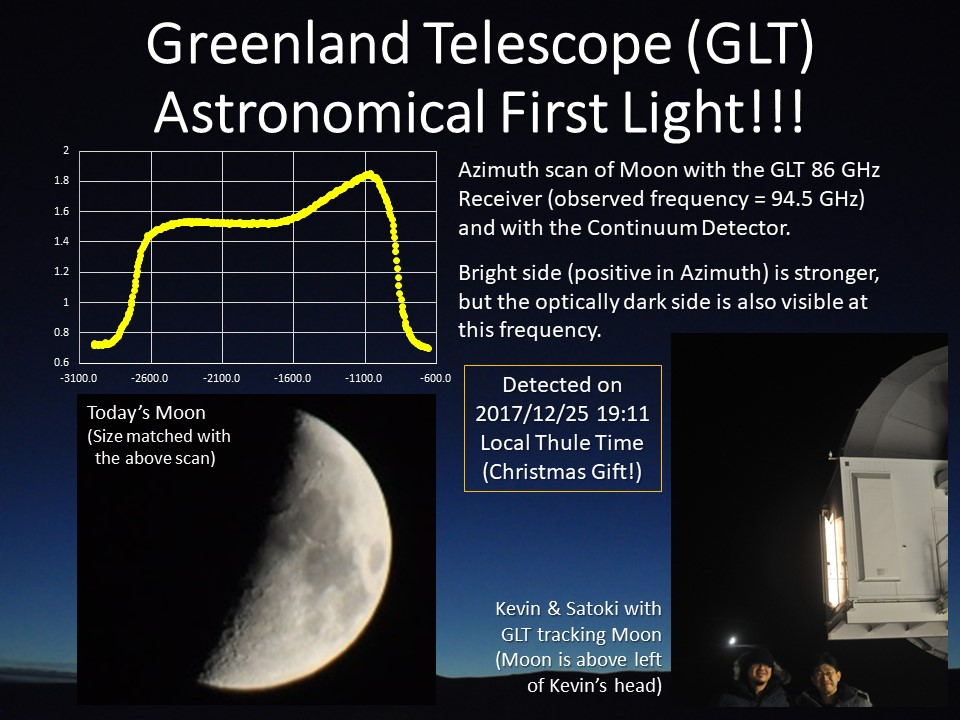
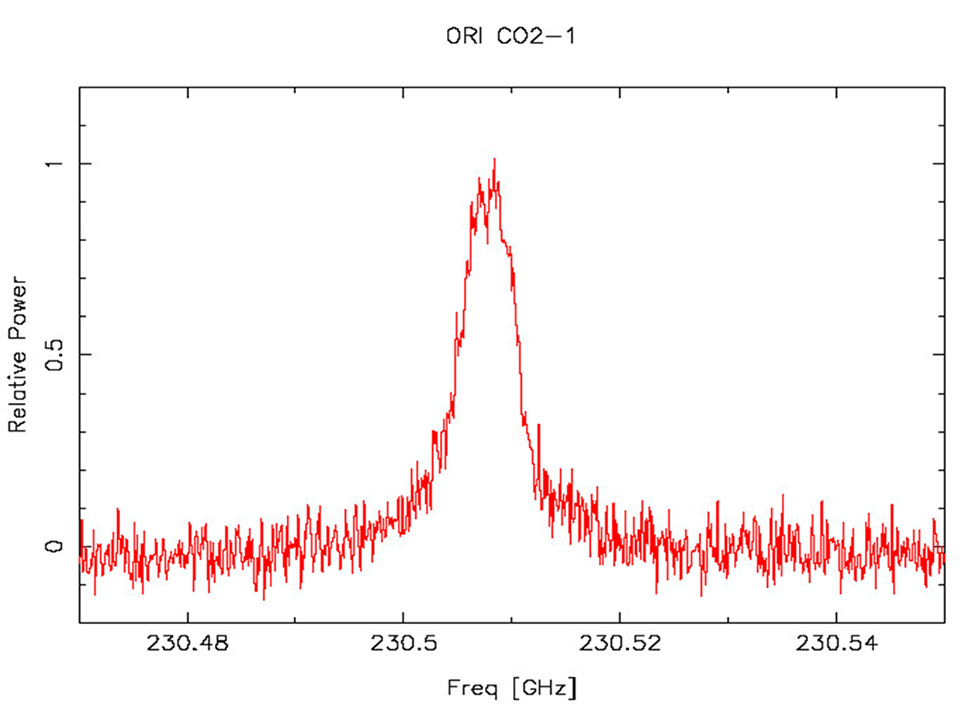
Later, we improved the focus positions using the Venus that started to rise above the horizon, and improved the pointing model by doing all-sky spectral line pointing measurements with the spectrometer. Armed with these updates, we successfully joined the Global Millimeter VLBI Array (GMVA) 86 GHz VLBI observations and the EHT 230 GHz VLBI observations from the middle to the end of April 2018. In the EHT observations, ALMA, the JCMT, and the SMA also joined. Hence, this was the first observation that all the ASIAA submillimeter telescopes participated. Playing a role in these world-wide VLBI observations was another huge achievement for us. With this success, we completed all the important objectives that we planned by the end of April 2018.
Current Antenna Status and Upcoming Plans
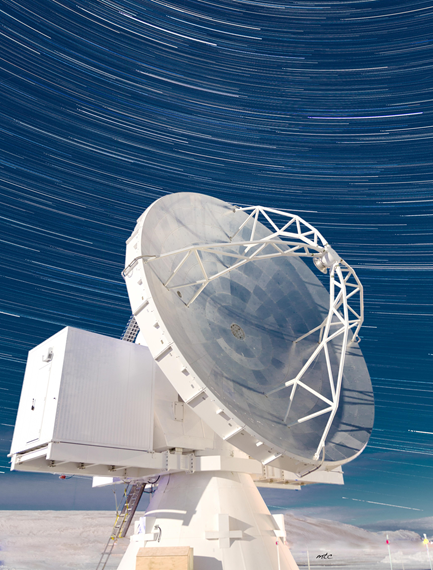
Event Horizon Telescope (EHT)
We have also been contributing to the EHT, which is an international collaboration led by the Harvard University, aiming to image the shadows of black holes in M87 and the center of our Milky Way (Sgr A*). We contributed to the development of the ALMA Phase-up Project in order to enable ALMA as one of the VLBI stations. We took a leading role in developing the VLBI simulator to assist correlator commissioning. In addition, we coordinated to incorporate the JCMT into the EHT observations: in August 2015, we performed a VLBI commissioning observation joined by ALMA and SMA, and successfully obtained fringes. Because of these efforts, ALMA started to call for proposals for VLBI observations, and we led the ALMA EHT proposals of M87 and helped for those of Sgr A* and other sources in the ALMA Cycle 4, 5, and 6 proposals. Other than EHT observational activities, we have been active in the EHT organization work groups such as Board, Science Council, and several sub-groups. Those contributions are significant to the EHT collaboration.

